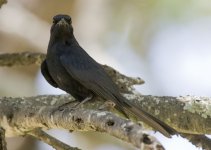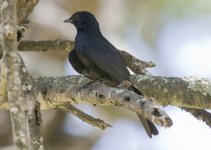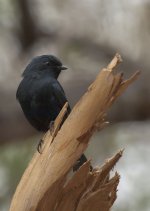jonlowes
Well-known member
The first two pictures below are of the same bird taken at Letaba in the Kruger National Park, South Africa in October 2009. The third is of a bird taken at Crocodile Bridge four days later. When I took the pictures I was of the opinion that they were all Southern Black Flycatchers but having arrived back in the UK & reviewed the pictures the two birds look so different I'm beginning to doubt my initial ID. I have also considered Square–tailed Drongo, but didn't see any suggestion of a red eye on either bird & can't see any on pictures either. Any views or help would be appreciated.







